Not just Boracay...
10 Iconic Japanese vs. Korean Foods Every Muslim Traveller Must Try
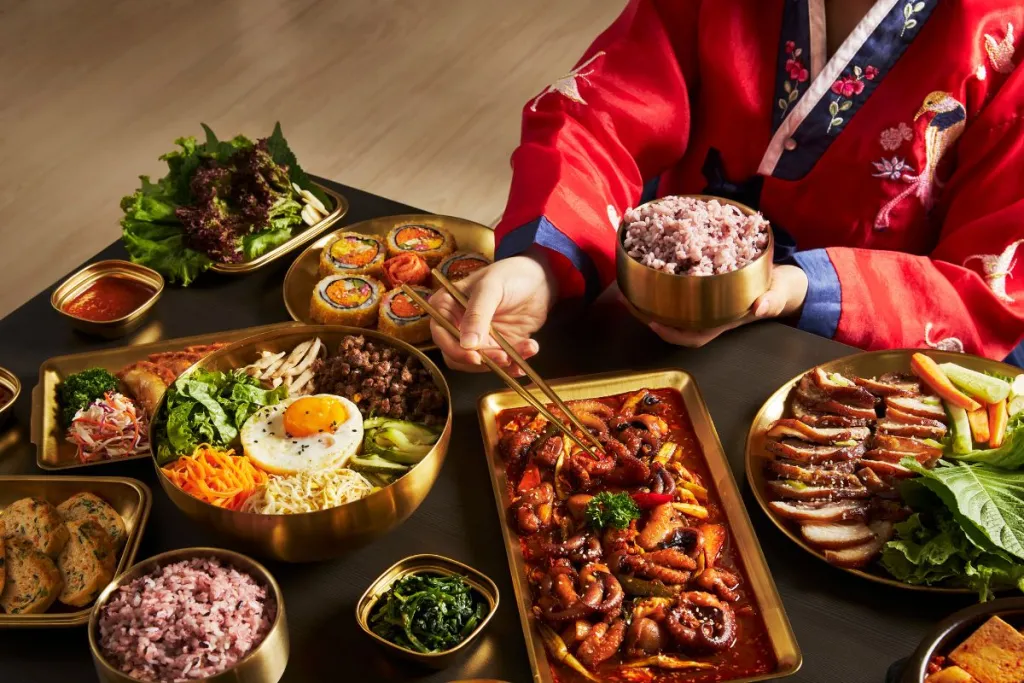
When it comes to food, Japan and Korea each have their own incredible culinary traditions that have captivated food lovers around the world. Both countries boast a rich history of flavours, textures, and cooking techniques that make their dishes unique yet equally delicious. Whether someone is planning a foodie adventure through Tokyo's bustling streets or Seoul's lively markets, there are plenty of dishes to savour and compare. For Muslim travellers, both destinations also offer a growing number of halal-friendly options, making it easier to experience these iconic dishes while adhering to dietary requirements. Here are ten iconic foods from Japan and Korea that are worth experiencing side by side.
Also read: Best Halal Travel Guide 2025 For Japan
1. Ramen vs. Naengmyeon
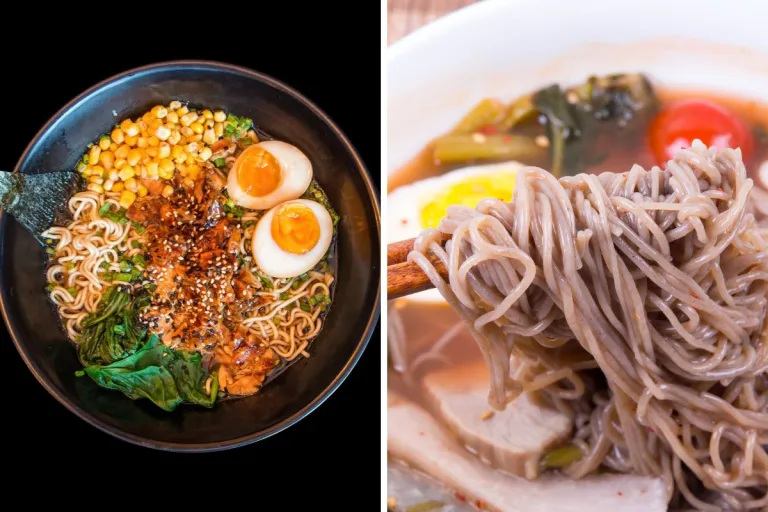 Image credit (L-R): studiof22byrichardorocha; hot8030 via Canva Pro
Image credit (L-R): studiof22byrichardorocha; hot8030 via Canva Pro
Japan’s ramen is a global favourite, offering a comforting bowl of noodles in rich, flavorful broths such as soy sauce-based shoyu, creamy tonkatsu, or miso. Each region in Japan has its own take on ramen, making it a must-try dish wherever one travels. On the other hand, Korea's naengmyeon provides a refreshing contrast. These cold, chewy buckwheat noodles are served in a tangy, icy broth that’s perfect for hot summer days. While ramen is all about warmth and umami, naengmyeon is light, cool, and invigorating. For Muslim travellers, halal-certified ramen shops and cold noodle eateries are becoming more accessible in major cities.
2. Sushi vs. Kimbap
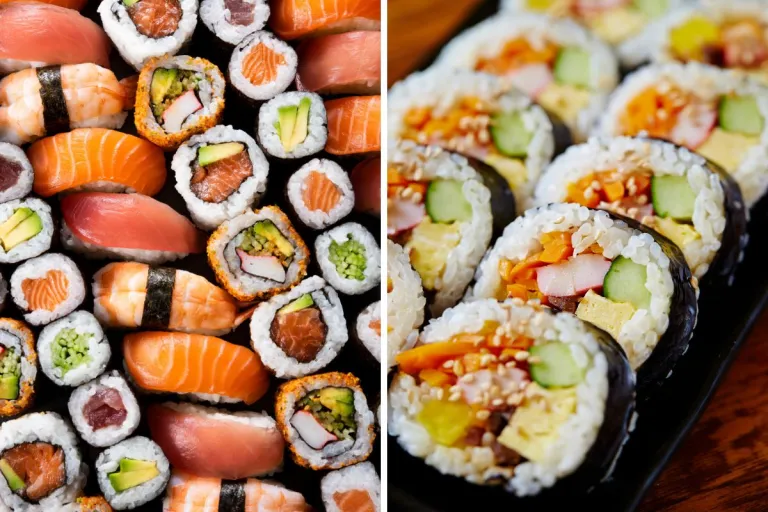 Image credit (L-R): rido; ma-no via Canva Pro
Image credit (L-R): rido; ma-no via Canva Pro
When thinking about Japanese cuisine, sushi is often the first thing that comes to mind. Made with vinegared rice and fresh seafood, sushi is an art form that highlights simplicity and balance. From delicate nigiri to creative rolls, sushi is all about the quality of ingredients. Meanwhile, Korea's kimbap offers a similar concept but with a twist. These seaweed-wrapped rice rolls are packed with a variety of fillings such as vegetables, eggs, and meat, seasoned with sesame oil for a unique flavour. Kimbap is a more casual, on-the-go snack, while sushi is often considered a refined dining experience. Halal sushi options are increasingly common in Japan, and kimbap can easily be made vegetarian, making both dishes accessible to Muslim travellers.
3. Tempura vs. Twigim
 Image credit (L-R): kazoka30; Ika Rahma via Canva Pro
Image credit (L-R): kazoka30; Ika Rahma via Canva Pro
Japanese tempura is all about delicacy. Light, crispy, and golden, tempura consists of seafood or vegetables coated in a thin batter and fried to perfection. It’s often served with a dipping sauce or a bowl of rice. Korea’s version, known as twigim, is a bit heartier. Twigim includes a variety of deep-fried items, from vegetables to dumplings, and is commonly enjoyed with spicy tteokbokki sauce. While tempura aims for a light, airy crunch, twigim is bold and satisfying. Halal-conscious travellers can look for vegetable-based options and ask about cooking oil used at stalls or restaurants.
4. Takoyaki vs. Hotteok
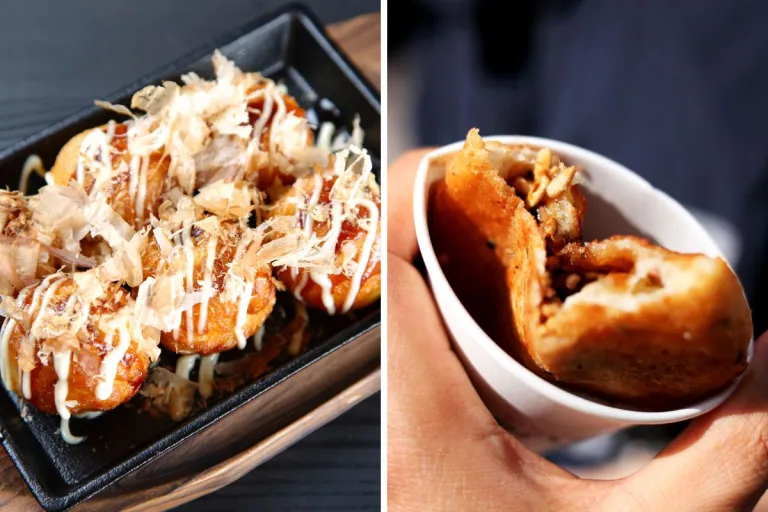 Image credit (L-R): deeepblue; JYEJYE via Canva Pro
Image credit (L-R): deeepblue; JYEJYE via Canva Pro
Street food lovers will appreciate the battle between Japan's takoyaki and Korea's hotteok. Takoyaki, round octopus-filled batter balls, are topped with tangy sauce, mayo, and bonito flakes, making them a savoury delight. In contrast, hotteok is a sweet, chewy pancake filled with a brown sugar and cinnamon mixture, sometimes with nuts for added crunch. While takoyaki is savoury and rich, hotteok is warm, sweet, and perfect for satisfying a dessert craving. Muslim travellers can opt for vegetarian or seafood takoyaki and enjoy hotteok from stalls that avoid using animal-based shortenings.
5. Wagyu Beef vs. Korean BBQ
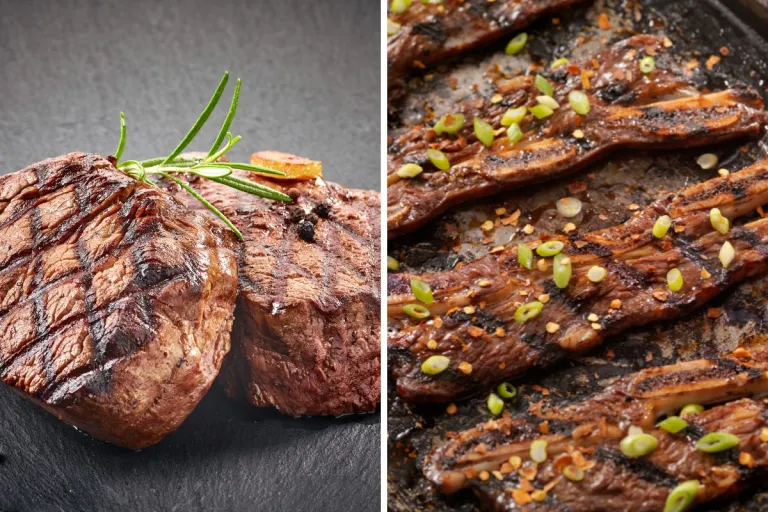 Image credit: (L-R): Magone; LauriPatterson via Canva Pro
Image credit: (L-R): Magone; LauriPatterson via Canva Pro
Meat lovers are in for a treat with wagyu beef from Japan and Korean BBQ. Wagyu is prized for its incredible marbling, tenderness, and melt-in-the-mouth texture, often cooked simply to let the flavour shine. Korean BBQ, on the other hand, is a lively dining experience where diners grill marinated meats themselves, pairing them with a variety of side dishes like kimchi, pickled vegetables, and dipping sauces. For Muslim travellers, halal wagyu options are available in select Japanese restaurants, and halal-certified Korean BBQ establishments are thriving in cities like Seoul.
6. Matcha Desserts vs. Bingsu
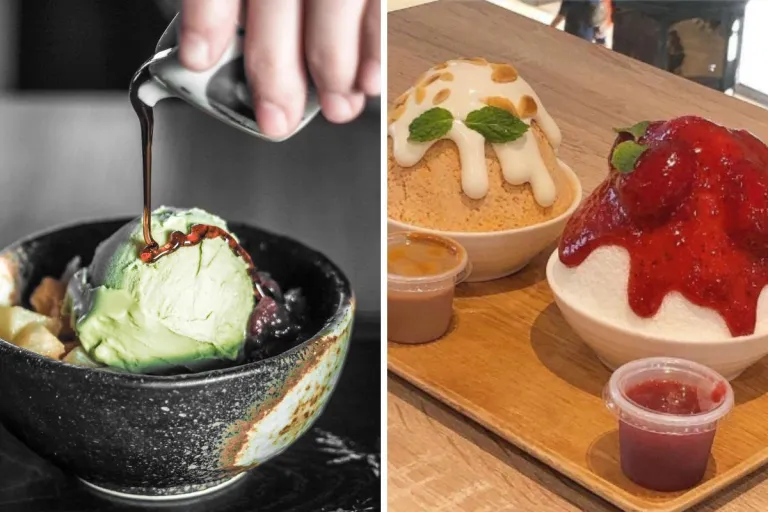 Image credit: Jer Chung via Canva Pro
Image credit: Jer Chung via Canva Pro
When it comes to desserts, Japan’s matcha treats and Korea’s bingsu are two refreshing options. Matcha-flavored sweets, such as ice cream, cakes, and mochi, offer a unique, slightly bitter taste that pairs well with sweetness. In contrast, bingsu is a mountain of finely shaved ice topped with condensed milk, red beans, and fruit, creating a refreshing and visually stunning dessert. Whether someone prefers the earthy notes of matcha or the cooling sweetness of bingsu, both are must-tries. Many dessert shops now cater to dietary restrictions, ensuring that Muslim travellers can indulge worry-free.
7. Okonomiyaki vs. Pajeon
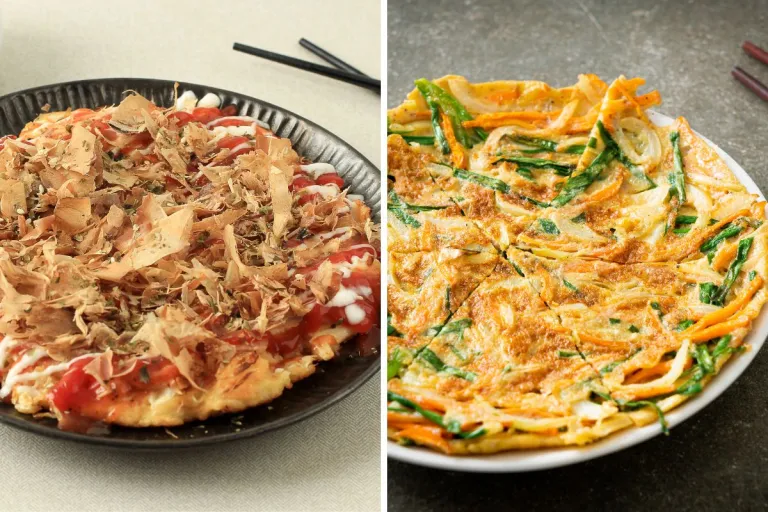 Image credit (L-R): Ika Rahma; Genina Vlasceanu via Canva Pro
Image credit (L-R): Ika Rahma; Genina Vlasceanu via Canva Pro
Savoury pancakes take centre stage with Japan's okonomiyaki and Korea's pajeon. Okonomiyaki, meaning "grilled as you like it," is a thick pancake made with flour, eggs, cabbage, and various toppings such as meat, seafood, and mayonnaise. It’s a satisfying dish often cooked at the table. Pajeon, Korea’s version, is a lighter, crispier pancake made primarily with green onions, sometimes with seafood or kimchi mixed in. Okonomiyaki is hearty and customisable, while pajeon is simple yet flavourful. For a halal experience, travellers can request vegetarian or seafood-based versions of these pancakes.
8. Miso Soup vs. Kimchi Jjigae
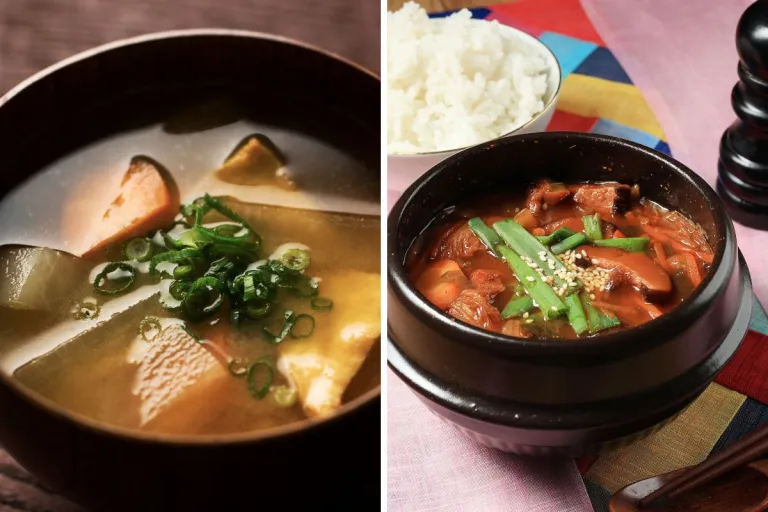 Image credit (L-R): Yagi-Studio; Ika Rahma via Canva Pro
Image credit (L-R): Yagi-Studio; Ika Rahma via Canva Pro
For comforting soups, Japan’s miso soup and Korea’s kimchi jjigae offer distinct experiences. Miso soup is a light, umami-packed broth made from fermented soybean paste, tofu, and seaweed, often served as a side dish. Kimchi jjigae, on the other hand, is a robust, spicy stew featuring aged kimchi, tofu, pork, or seafood. While miso soup is subtle and soothing, kimchi jjigae is bold and hearty. Muslim travellers can look for seafood-based kimchi jjigae and ensure miso soup does not contain non-halal additives.
9. Mochi vs. Tteok
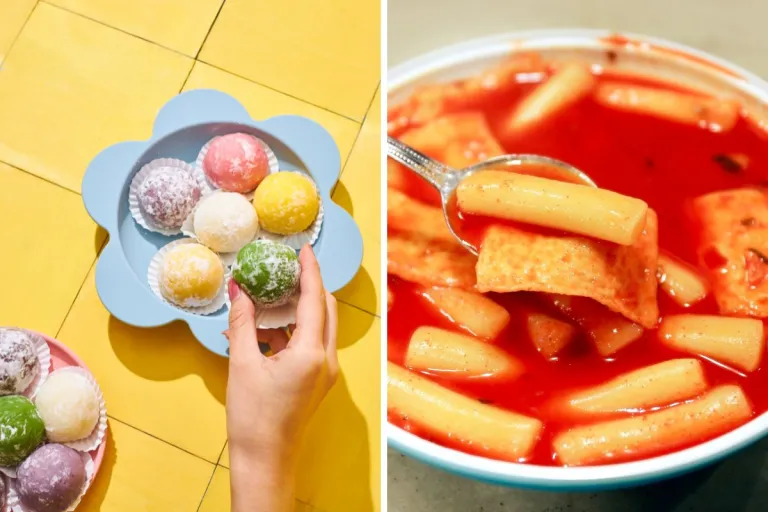 Image credit (L-R): ONI-Production; DONGSEON-KIM via Canva Pro
Image credit (L-R): ONI-Production; DONGSEON-KIM via Canva Pro
Finally, no culinary comparison would be complete without mentioning Japan’s mochi and Korea’s tteok. Mochi, made from glutinous rice, is soft, chewy, and often filled with sweet red bean paste or ice cream. In contrast, tteok comes in many varieties, both sweet and savoury, with flavours ranging from honey-filled songpyeon to spicy tteokbokki. Mochi tends to be delicate and dessert-like, while tteok offers a broader range of flavours and textures. Both desserts are naturally halal-friendly, making them great options for Muslim travellers.
10. Unagi vs. Godeungeo-gui
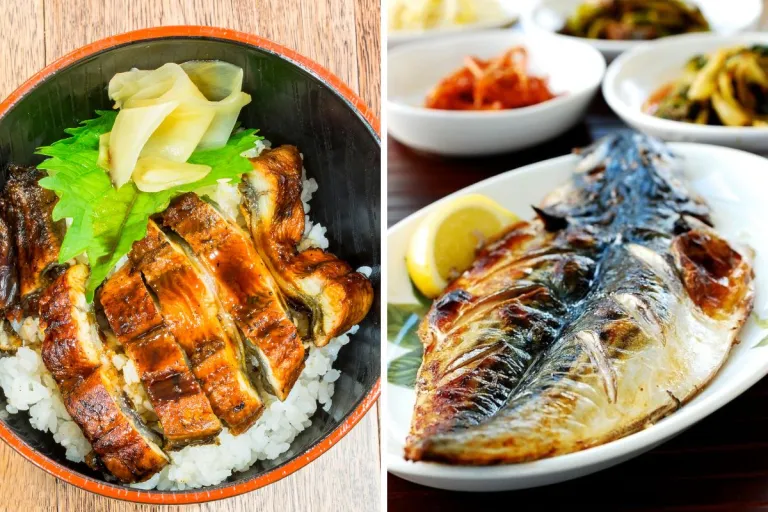 Image credit (L-R): Blackholy via Canva Pro; Korean Bapsang | Official Website
Image credit (L-R): Blackholy via Canva Pro; Korean Bapsang | Official Website
Also read: Discovering the Best Halal Restaurants in South Korea
Japan’s unagi, or grilled eel, is a delicacy often enjoyed with a sweet soy-based glaze and served over steamed rice. The dish is revered for its rich, smoky flavour and tender texture. Korea’s godeungeo-gui, or grilled mackerel, offers a different take on seafood, with its savoury, slightly salty taste and crispy skin. Both dishes highlight the countries’ love for grilled fish but differ in flavour profiles and presentation. Muslim travellers can seek out halal-certified unagi or godeungeo-gui options, ensuring the sauces and marinades comply with dietary needs.
Exploring the culinary landscapes of Japan and Korea offers a fascinating journey into two rich and diverse food cultures. For Muslim travellers, the growing availability of halal-certified restaurants and ingredients ensures they can enjoy these iconic dishes without compromise. Whether someone prefers the delicate flavours of Japanese cuisine or the bold, spicy dishes of Korea, both countries provide unforgettable gastronomic experiences that are well worth the trip!
Published at
About Author
Aimi Zulkiflee
Subscribe our Newsletter
Get our weekly tips and travel news!
Recommended Articles
10 Best Halal-Friendly Destinations in The Philippines for Muslim Travellers 10 Best Places for Muslim Travellers to See Tulip Festivals in 2025 Fun Fact: Tulips didn’t actually come from the Netherlands but Türkiye!
10 Cafes in Johor Bahru You Have To Go To Head on to someplace new to taste something unfamiliar and fall in love! There is so many new places to explore, why not start with these?
10 Halal Anime Food Guide for Muslim Travellers in Japan Muslim-friendly versions of popular anime dishes across Japan!
Top 10 Popular Muslim-Friendly Destinations to Visit in 2025 Our schedules are packed, buddies!
Latest Articles
China Power Bank Rules 2025: What Muslim Travellers Must Know Before Flying read this before you go to China
South Island New Zealand Halal Travel: Family Adventures, Halal Restaurants & Unique Accommodations Let's explore New Zealand
Muslim-Friendly Guide to Hong Kong International Airport (HKIA): Prayer Rooms, Halal Food, and Shopping Lets explore HKIA for Muslim Traveler
10 Popular Halal Restaurants in Shenzhen, China for Muslim Travelers Lets try halal food at Shenzhen, China
Japan Kansai Airport Is Slowly Sinking—Here’s Why Muslim Travellers Still Love It! Parts of Kansai Airport could reach sea level by 2056!

